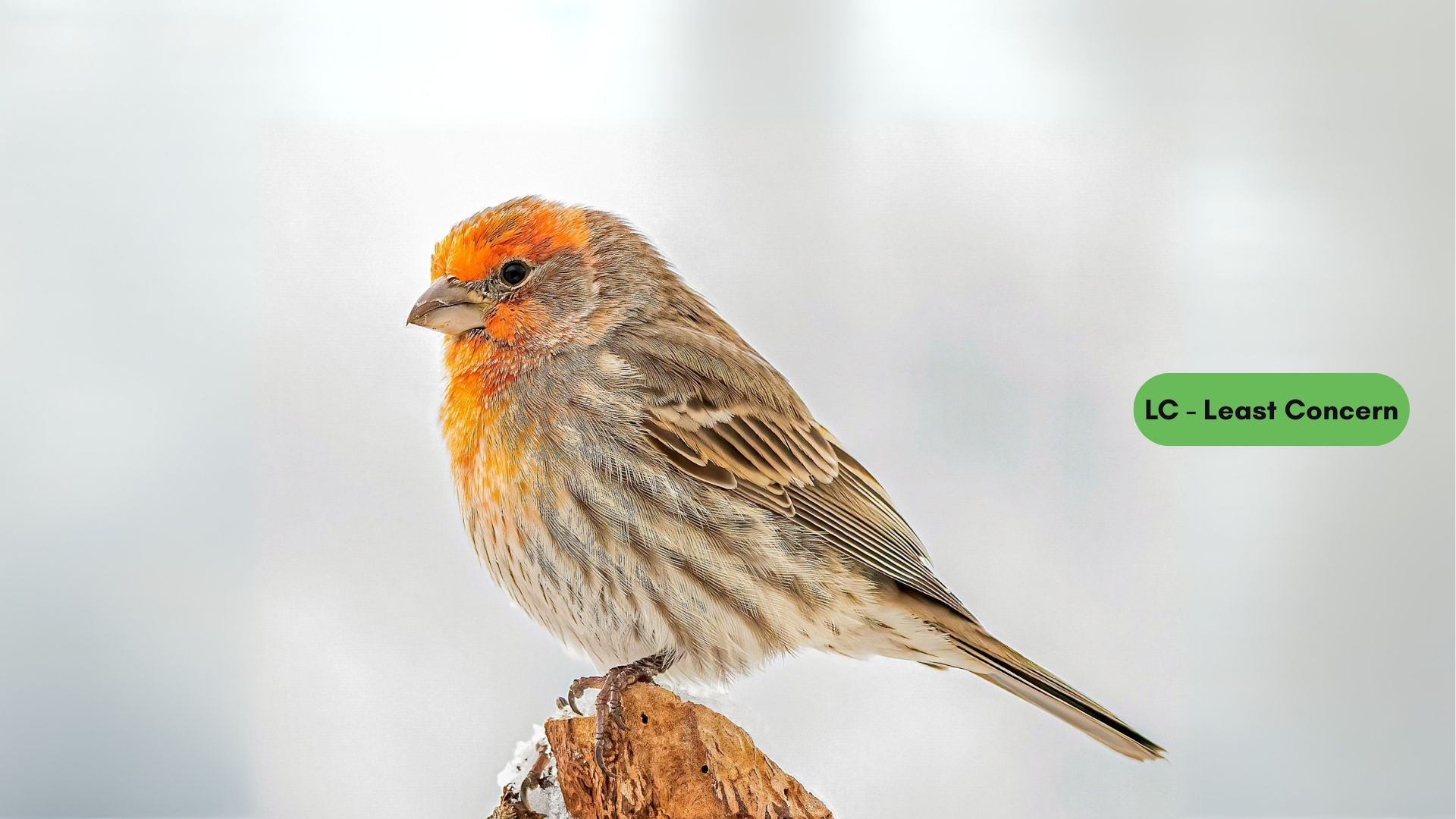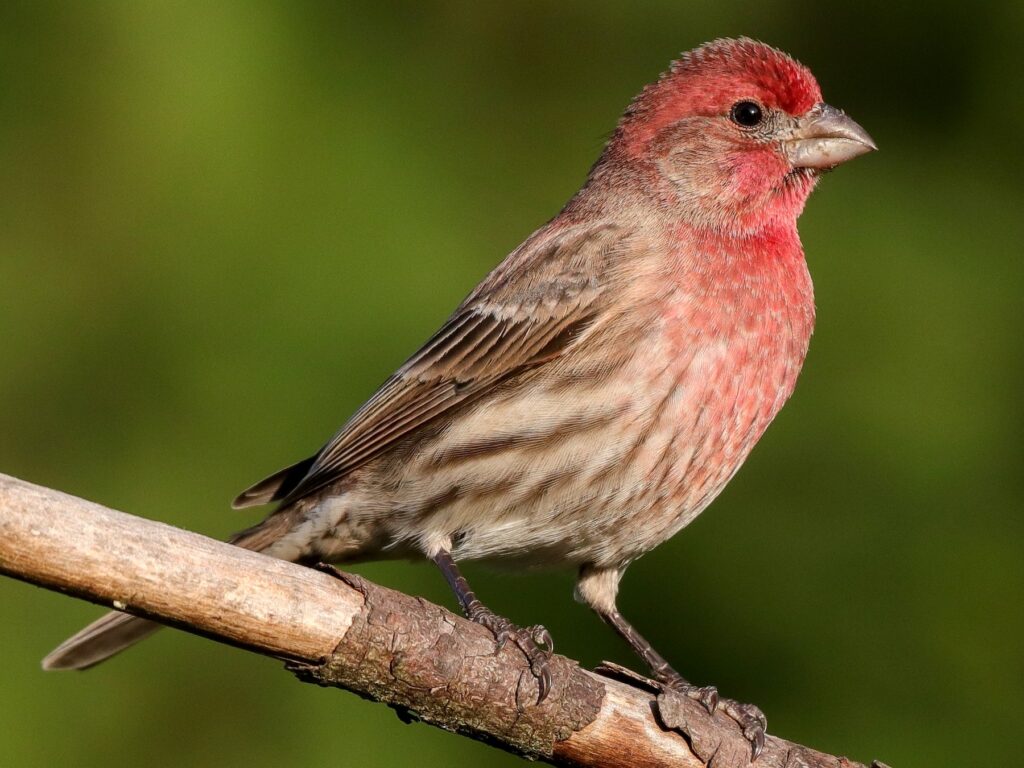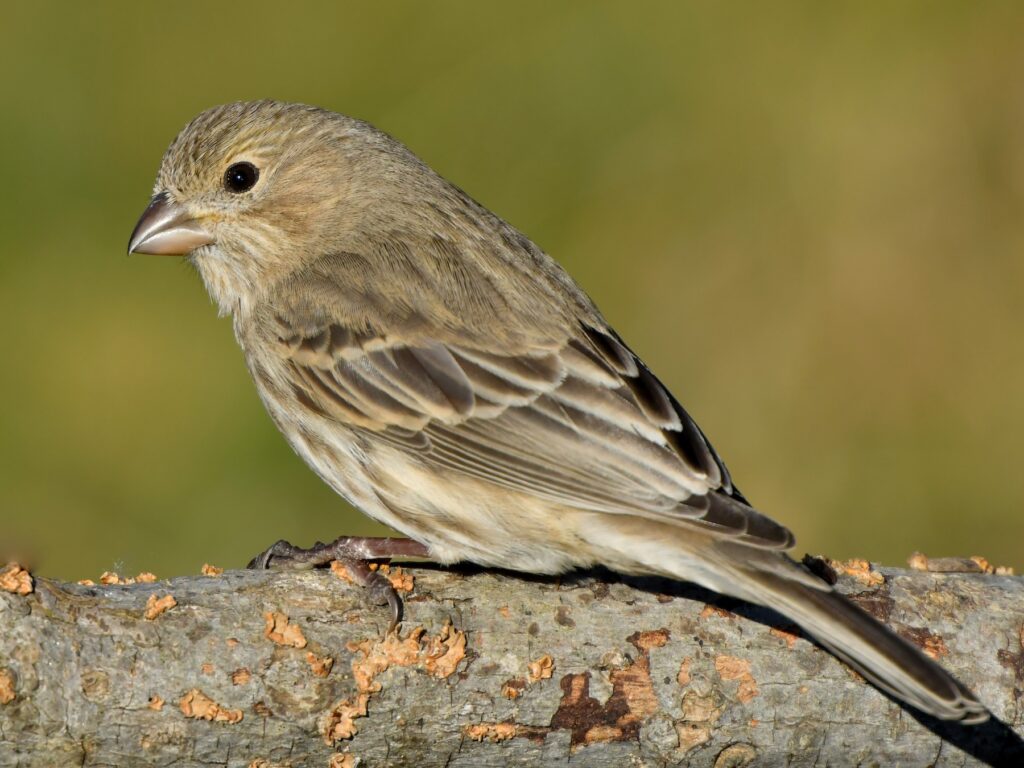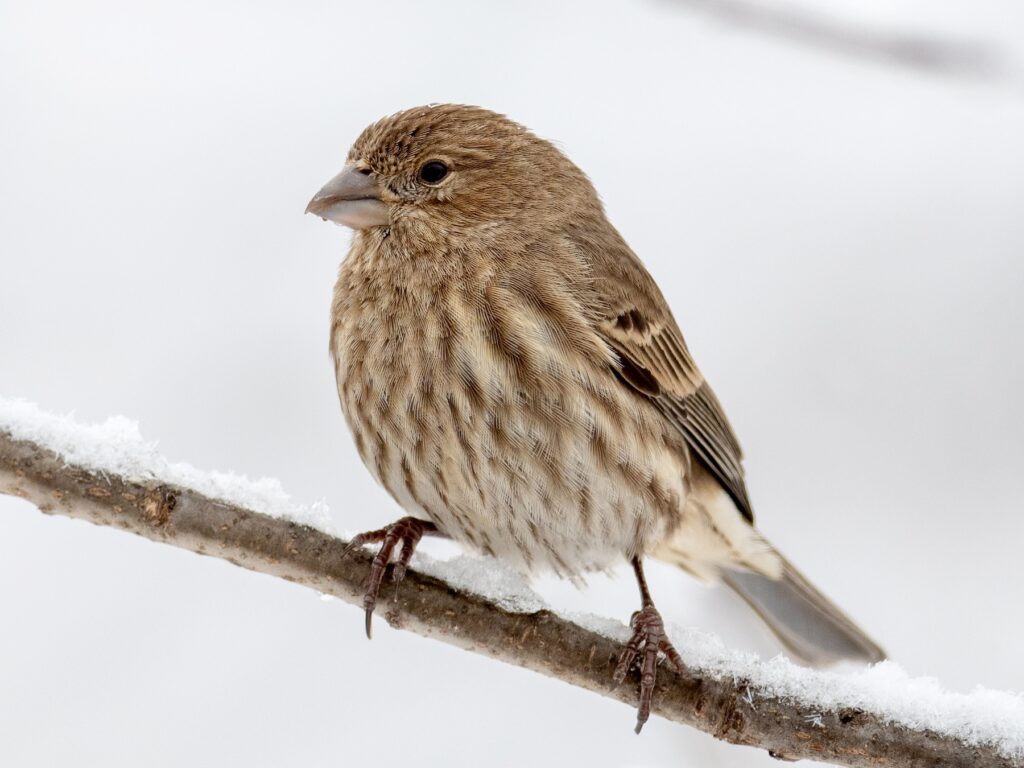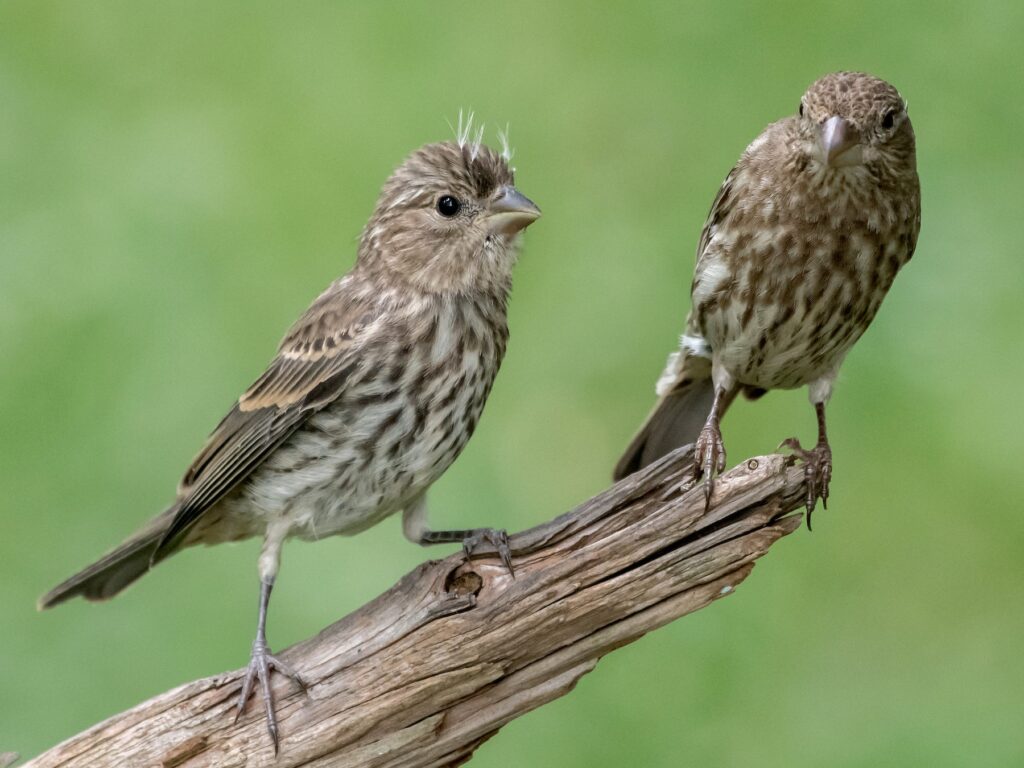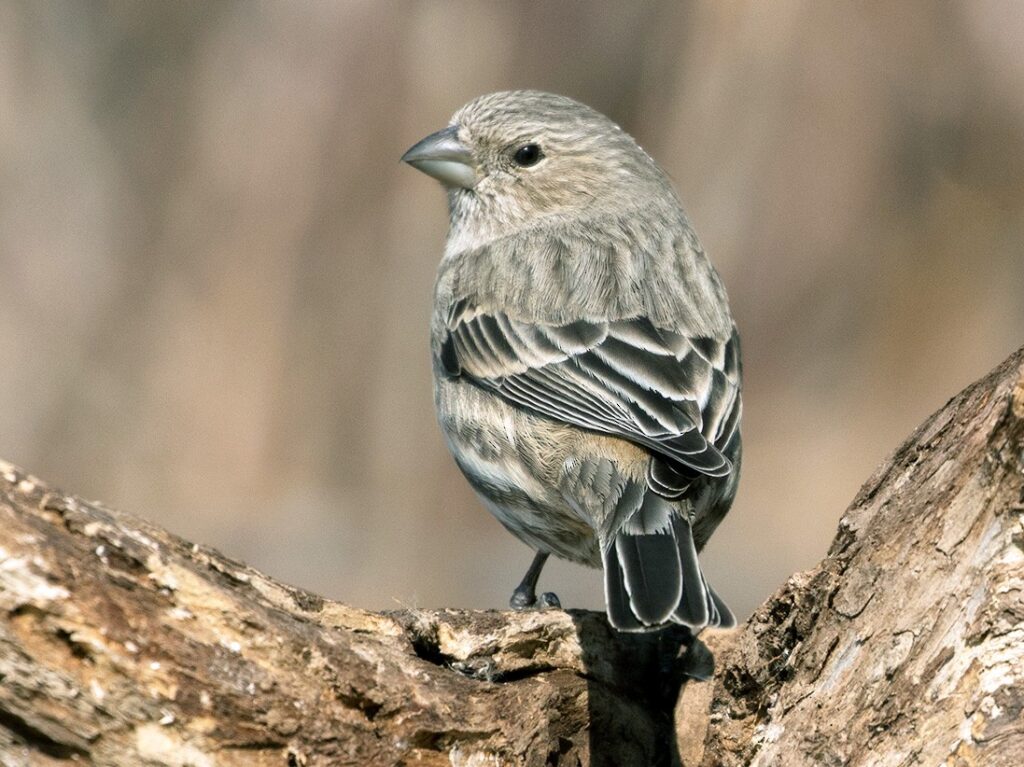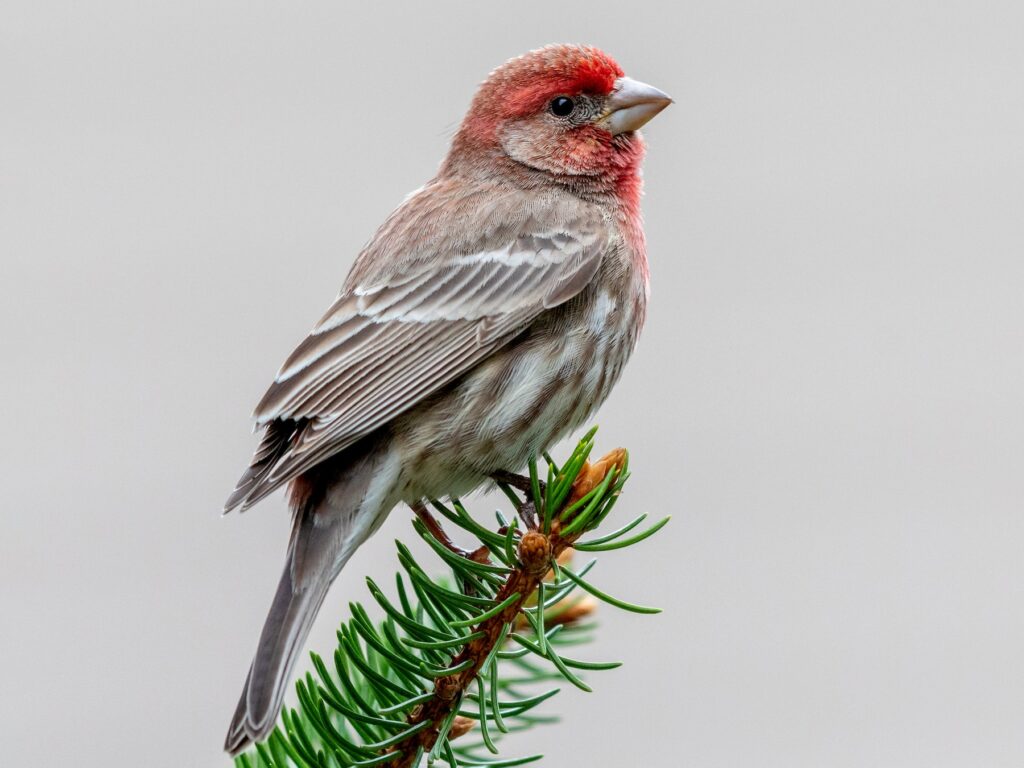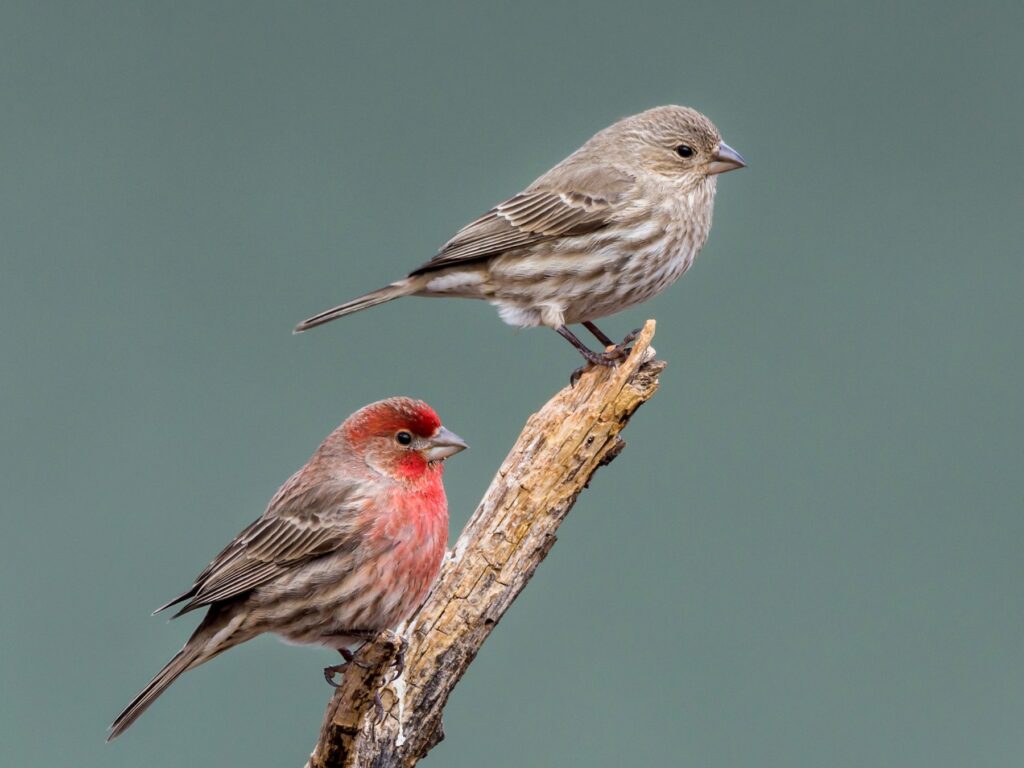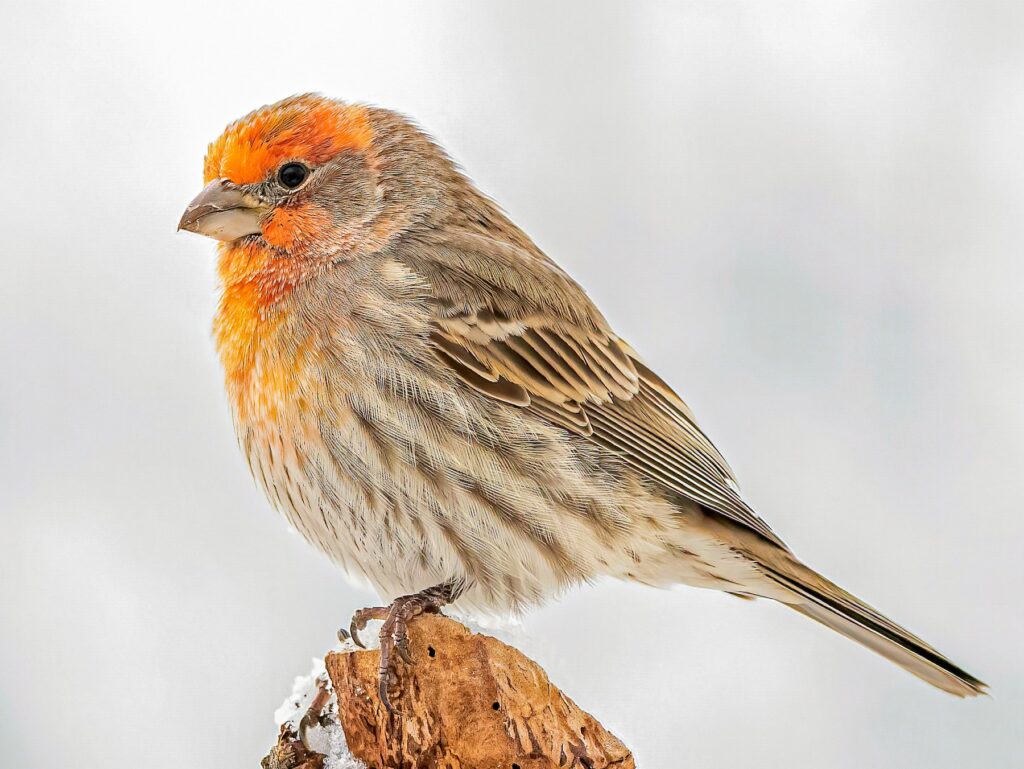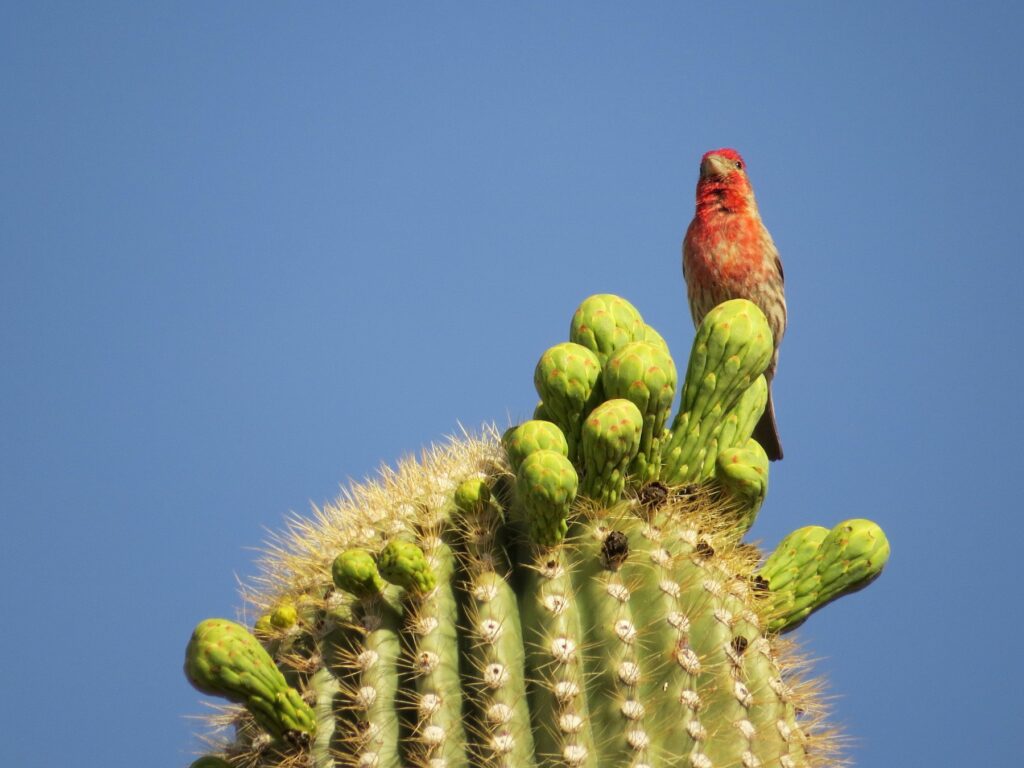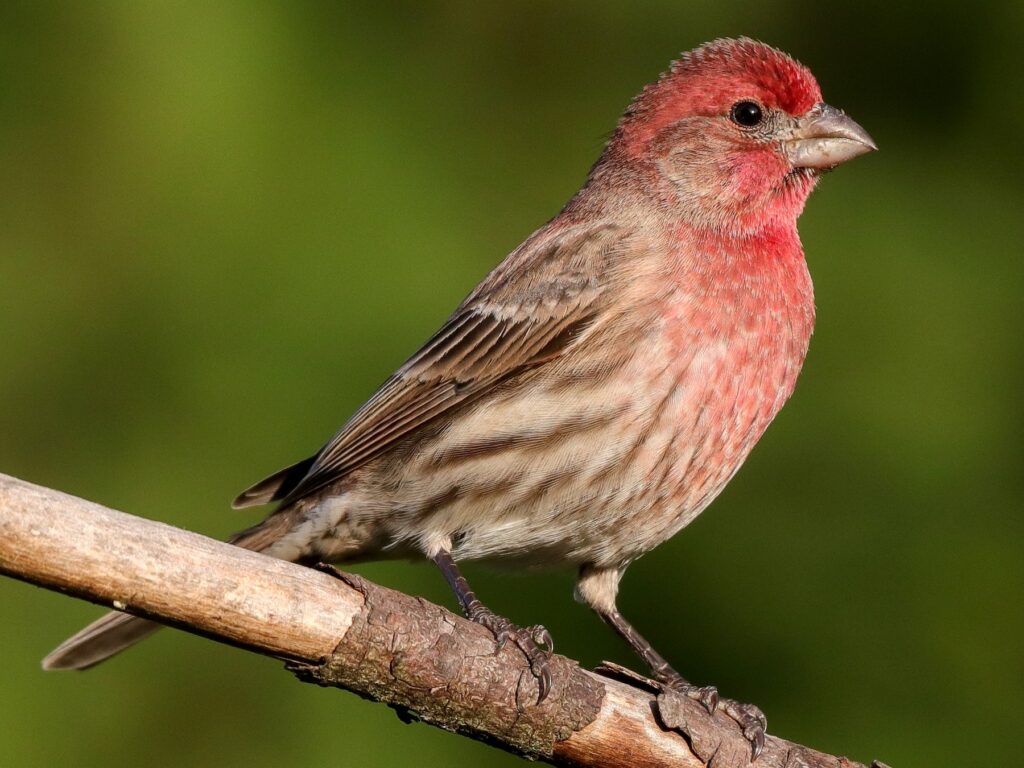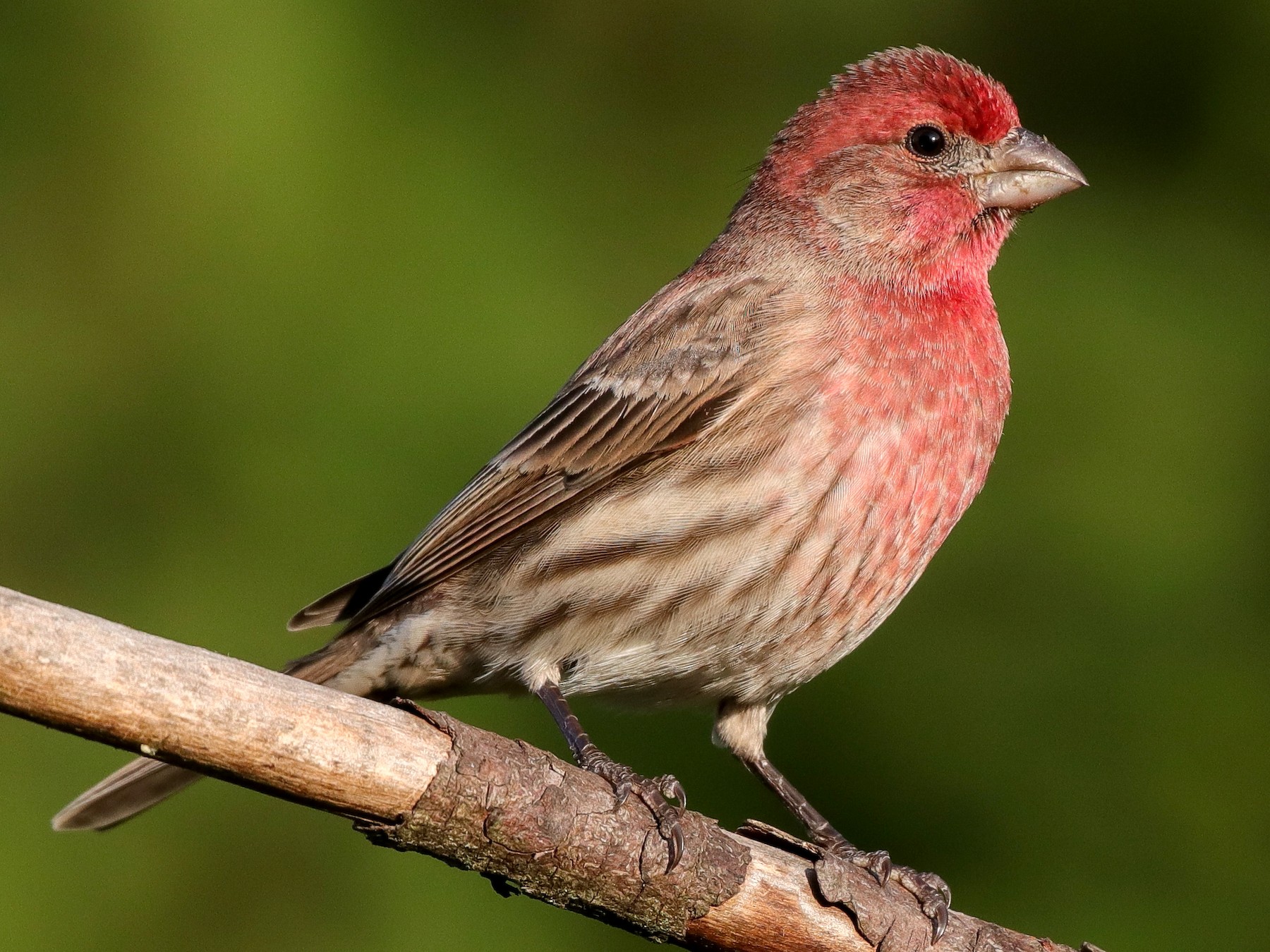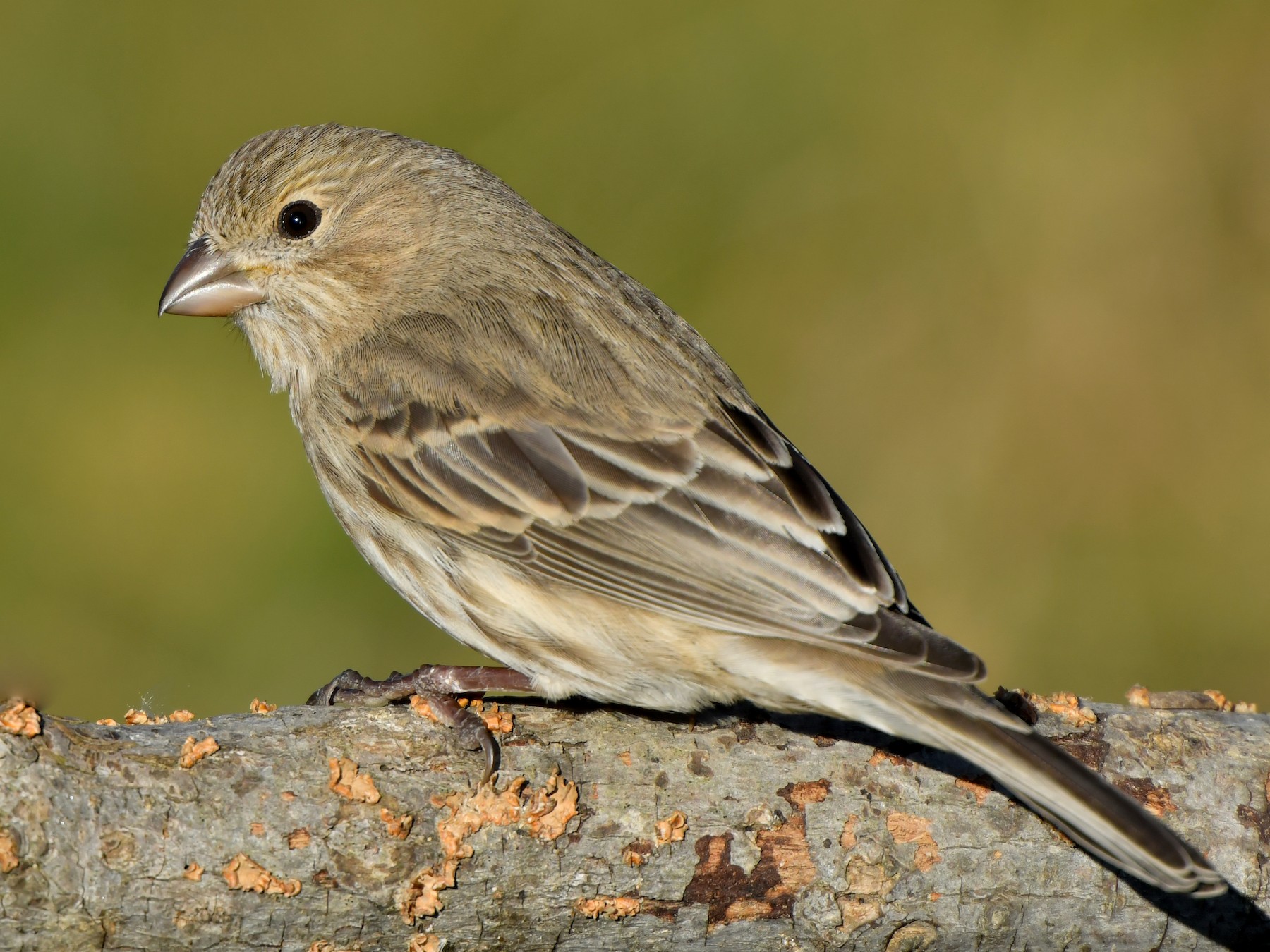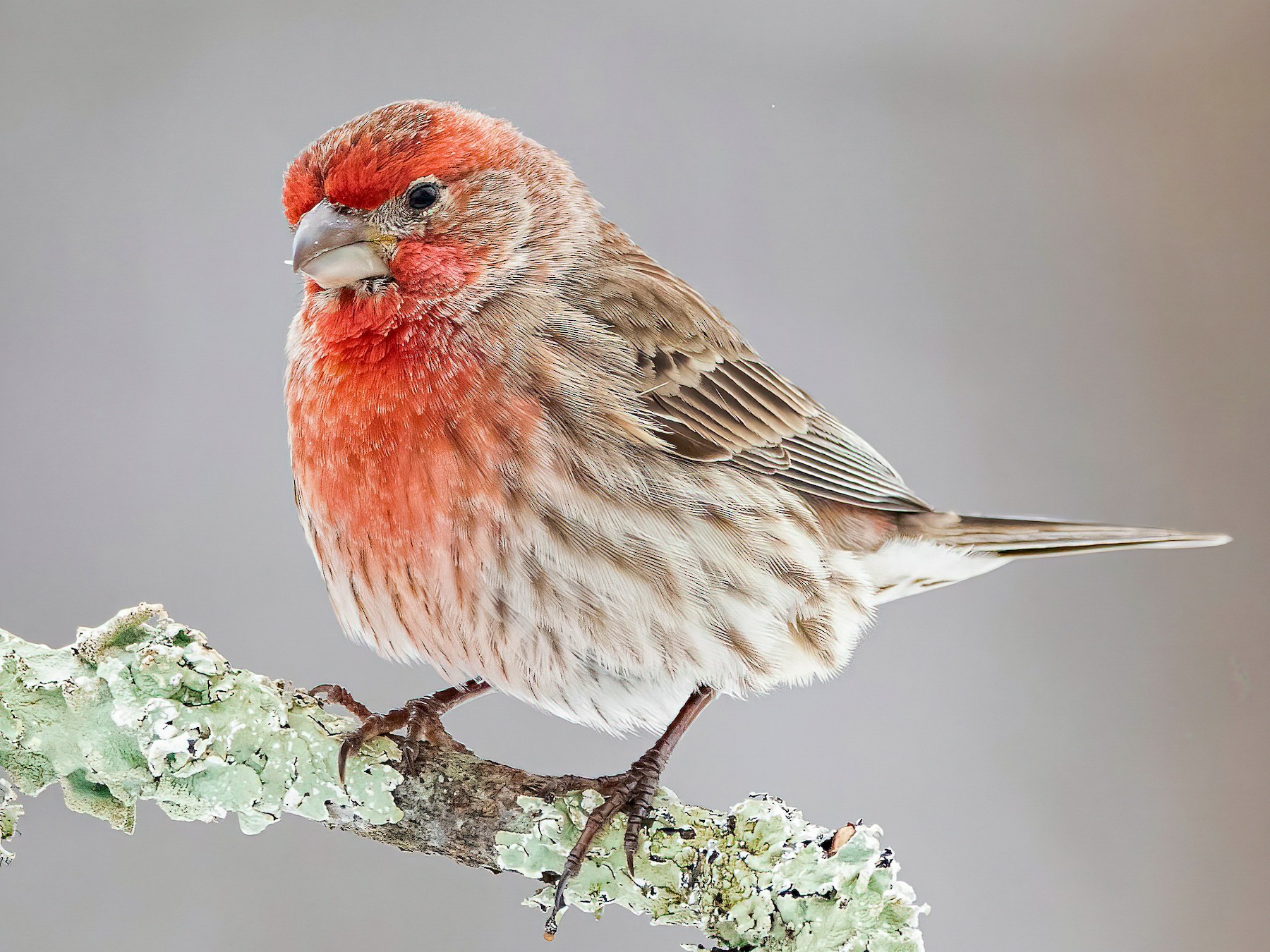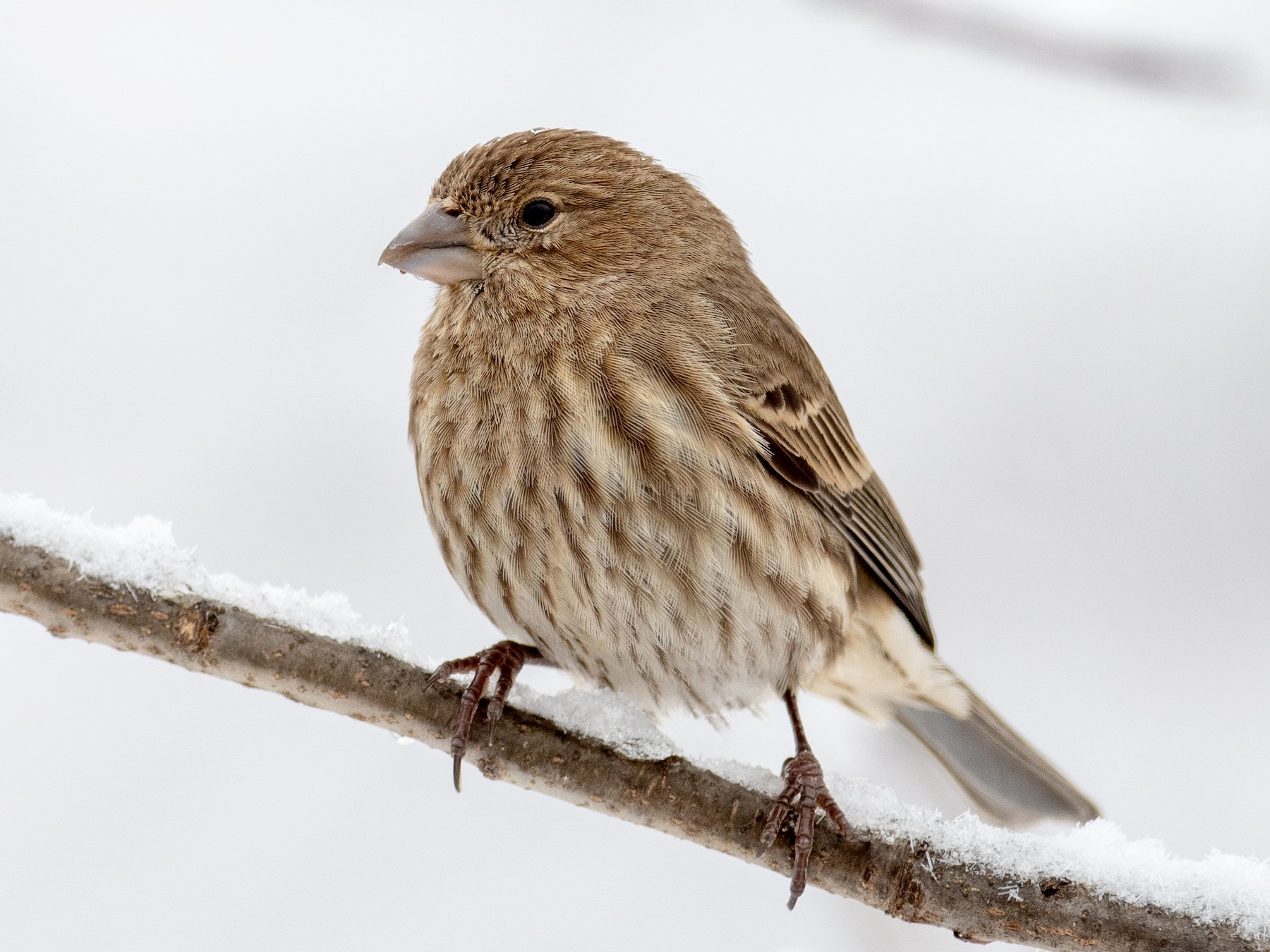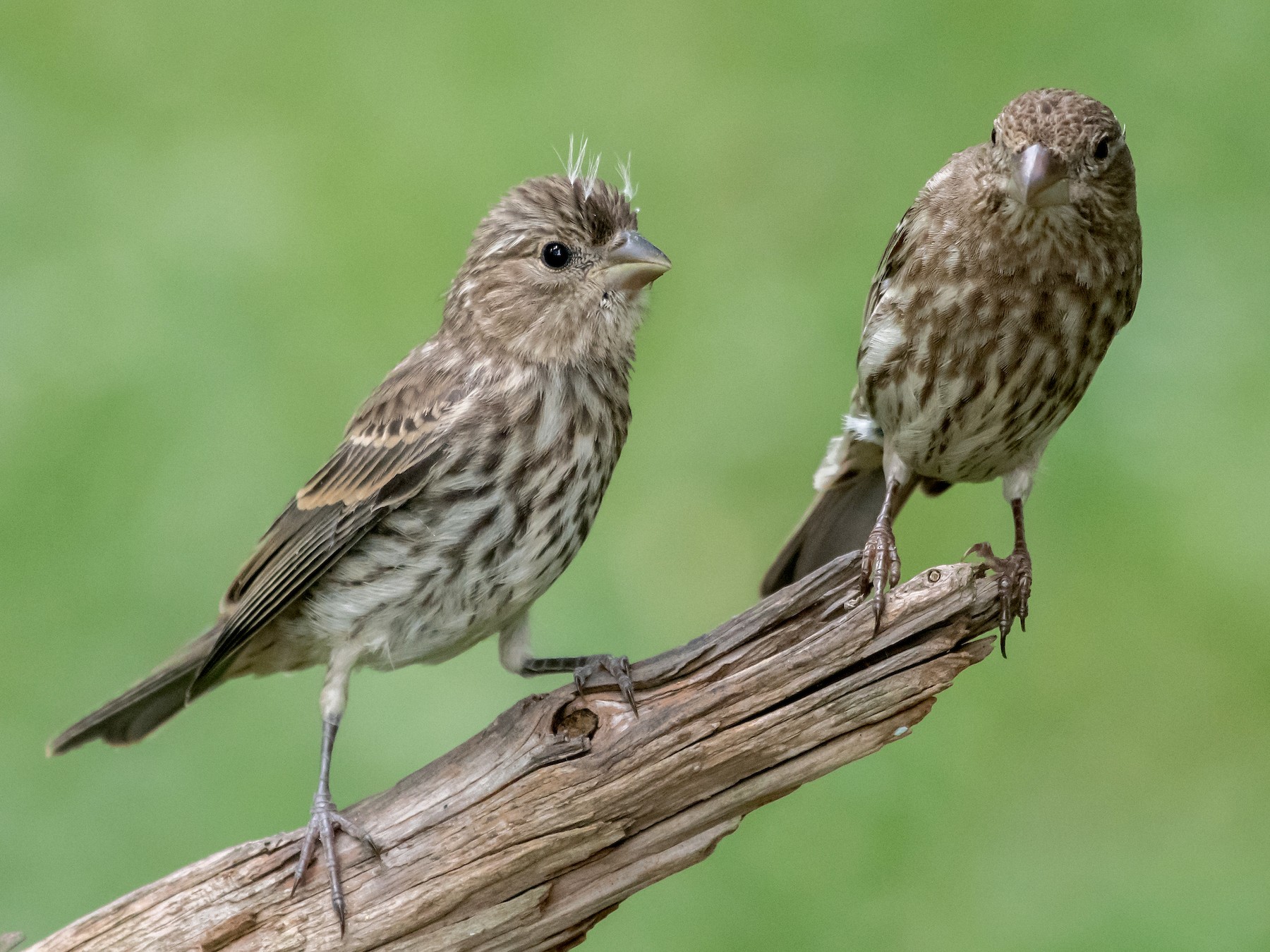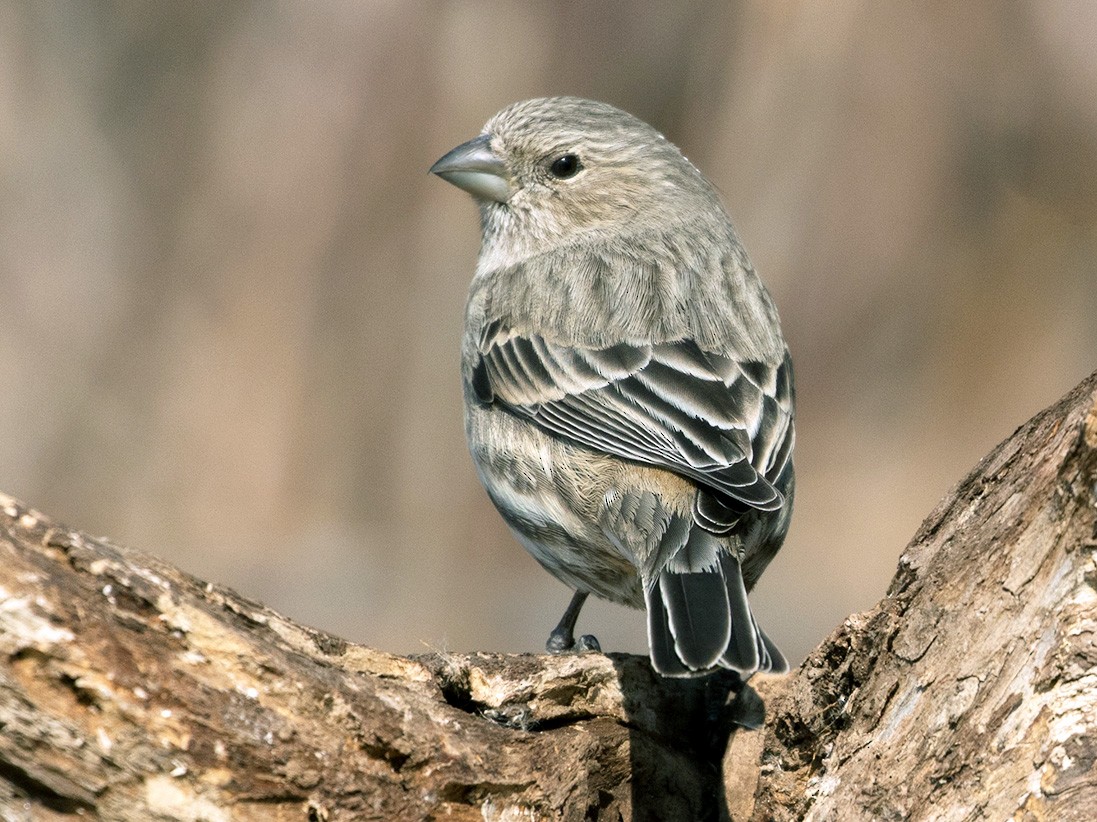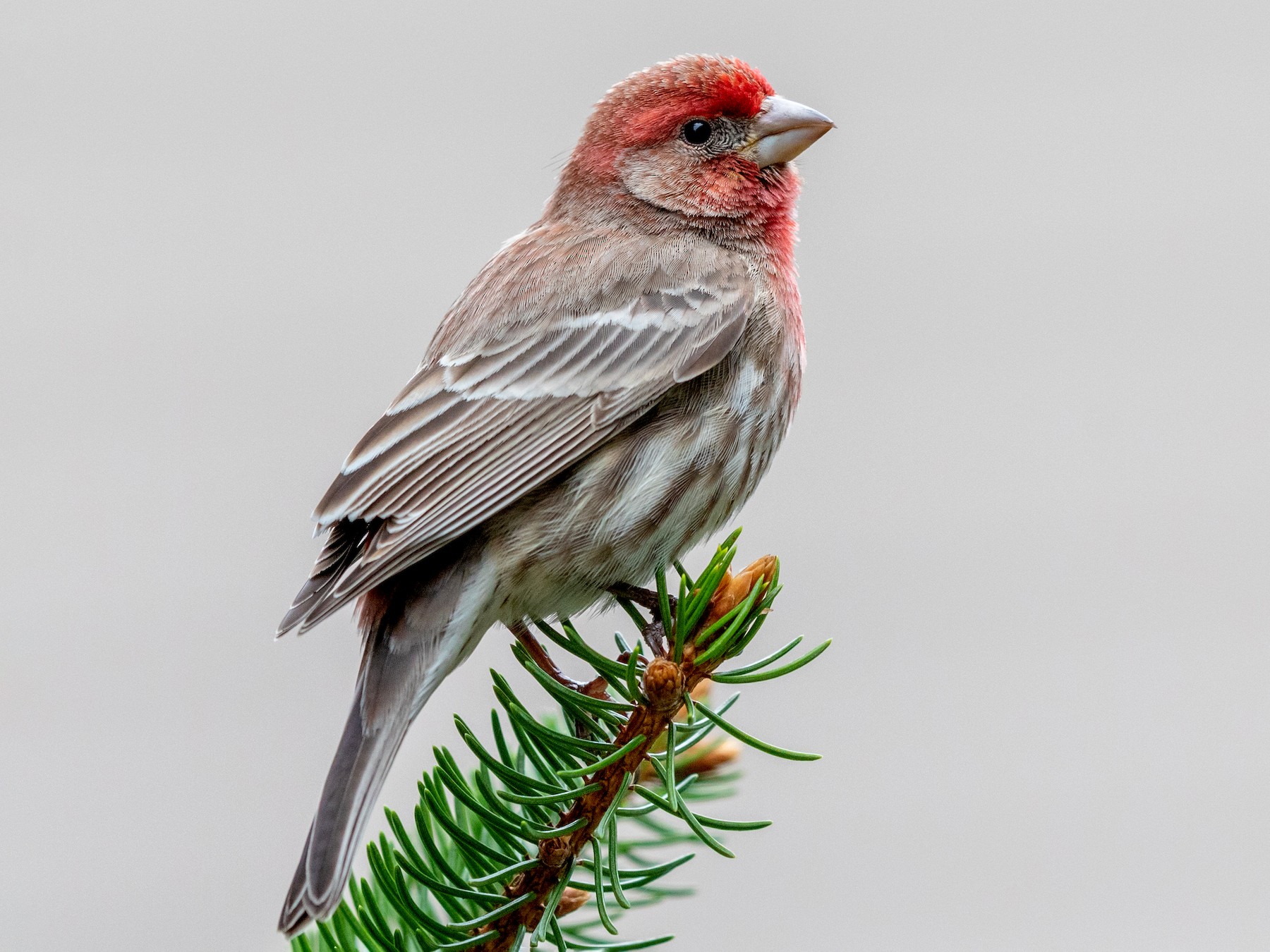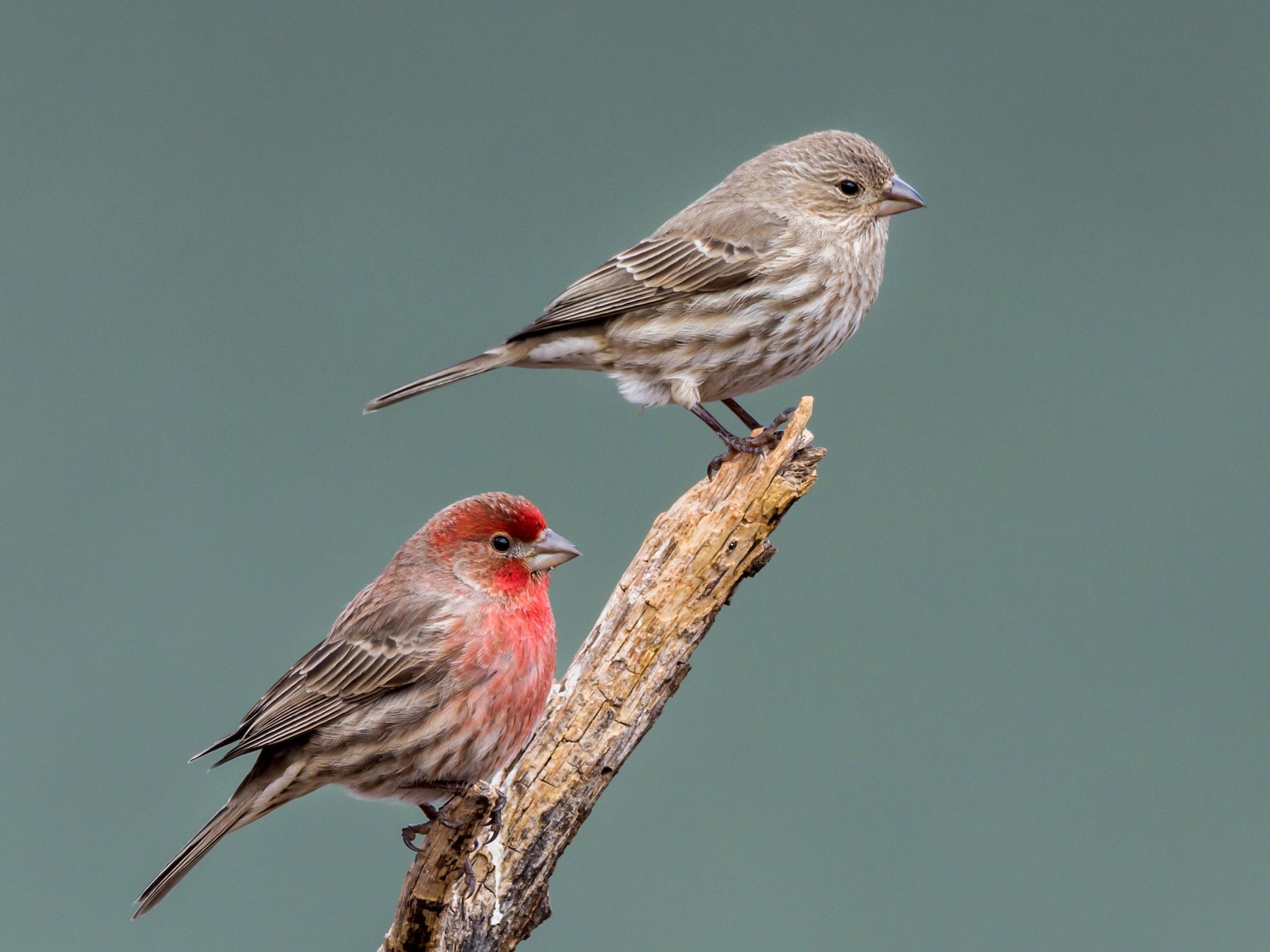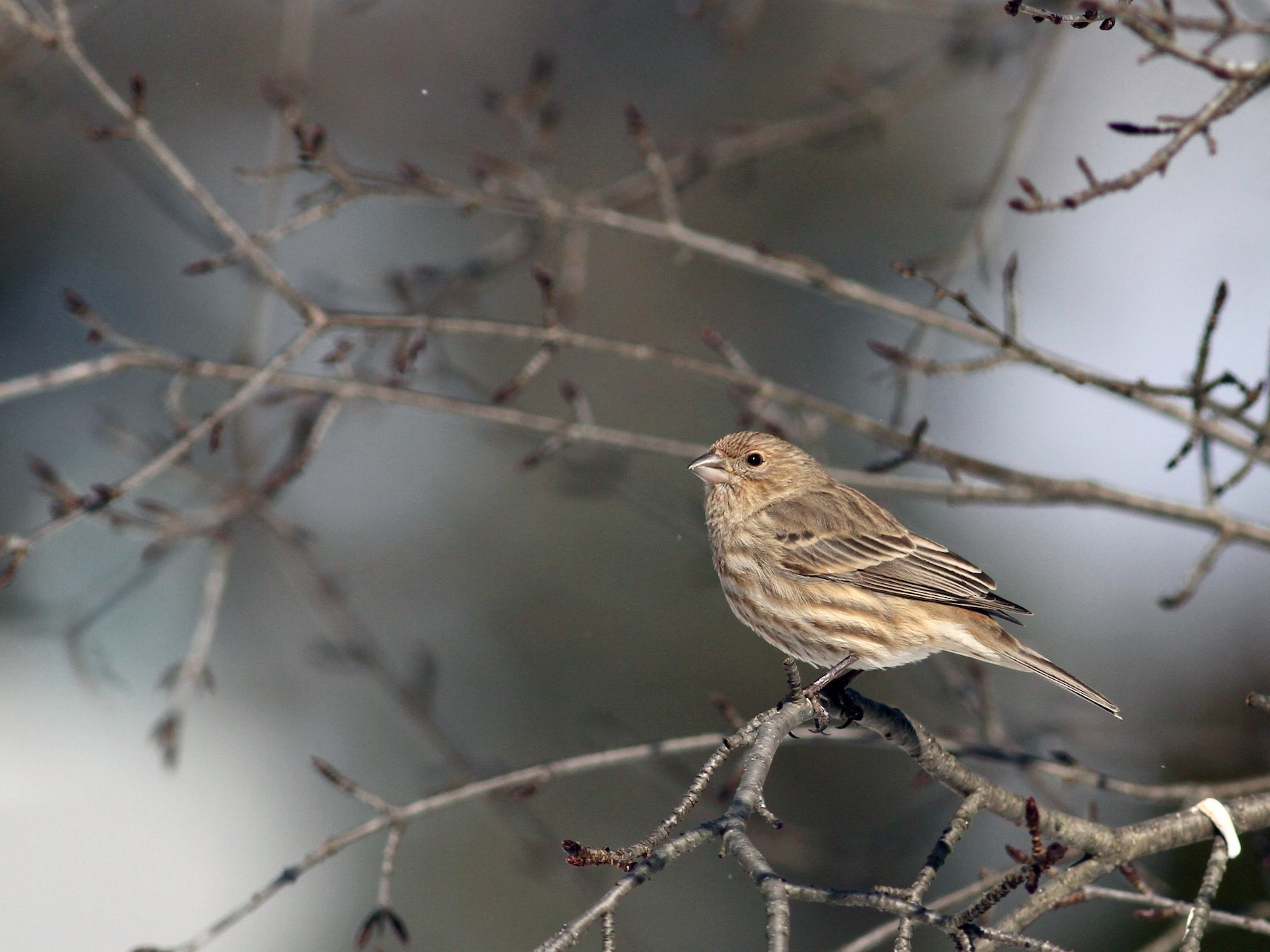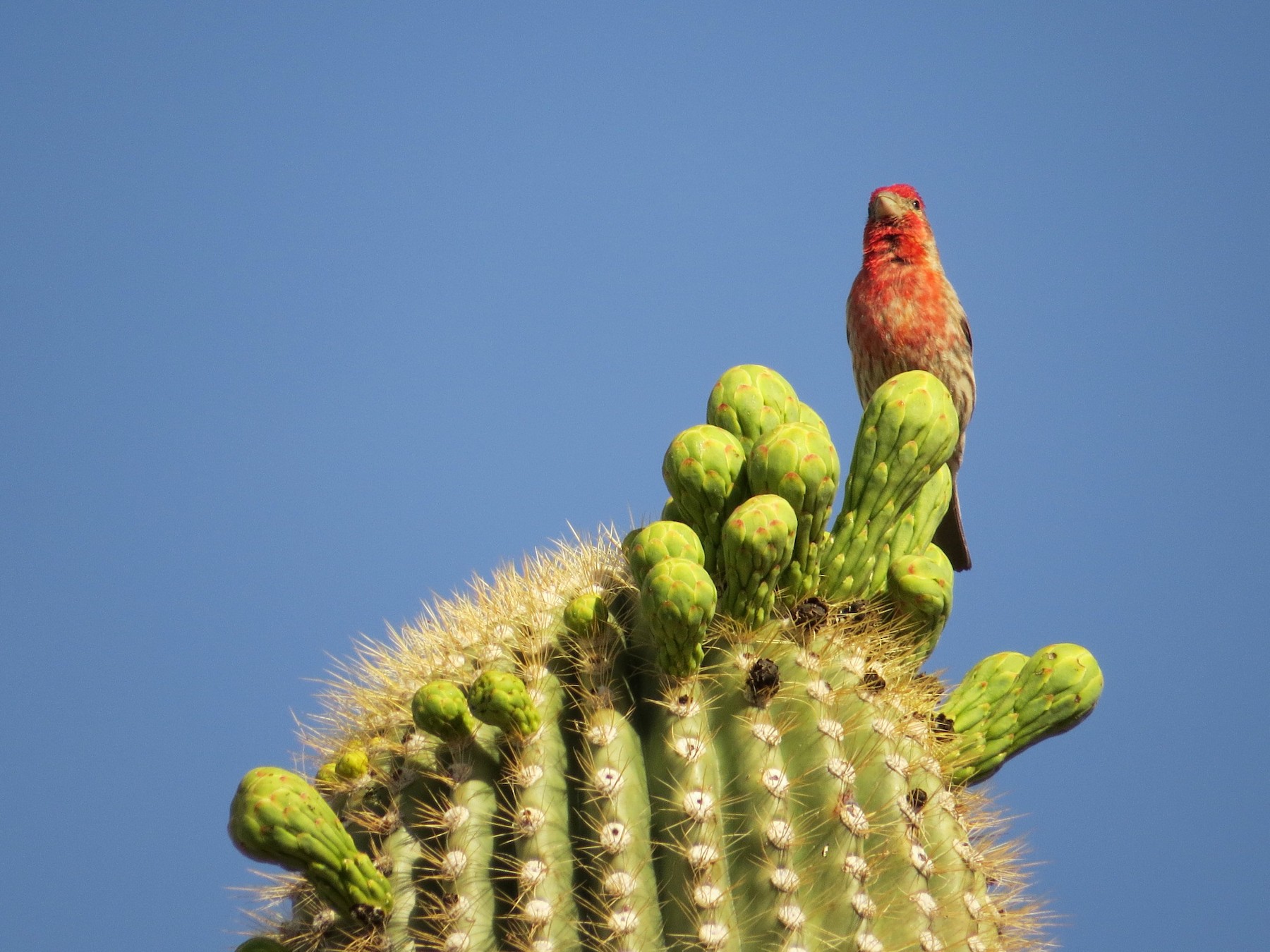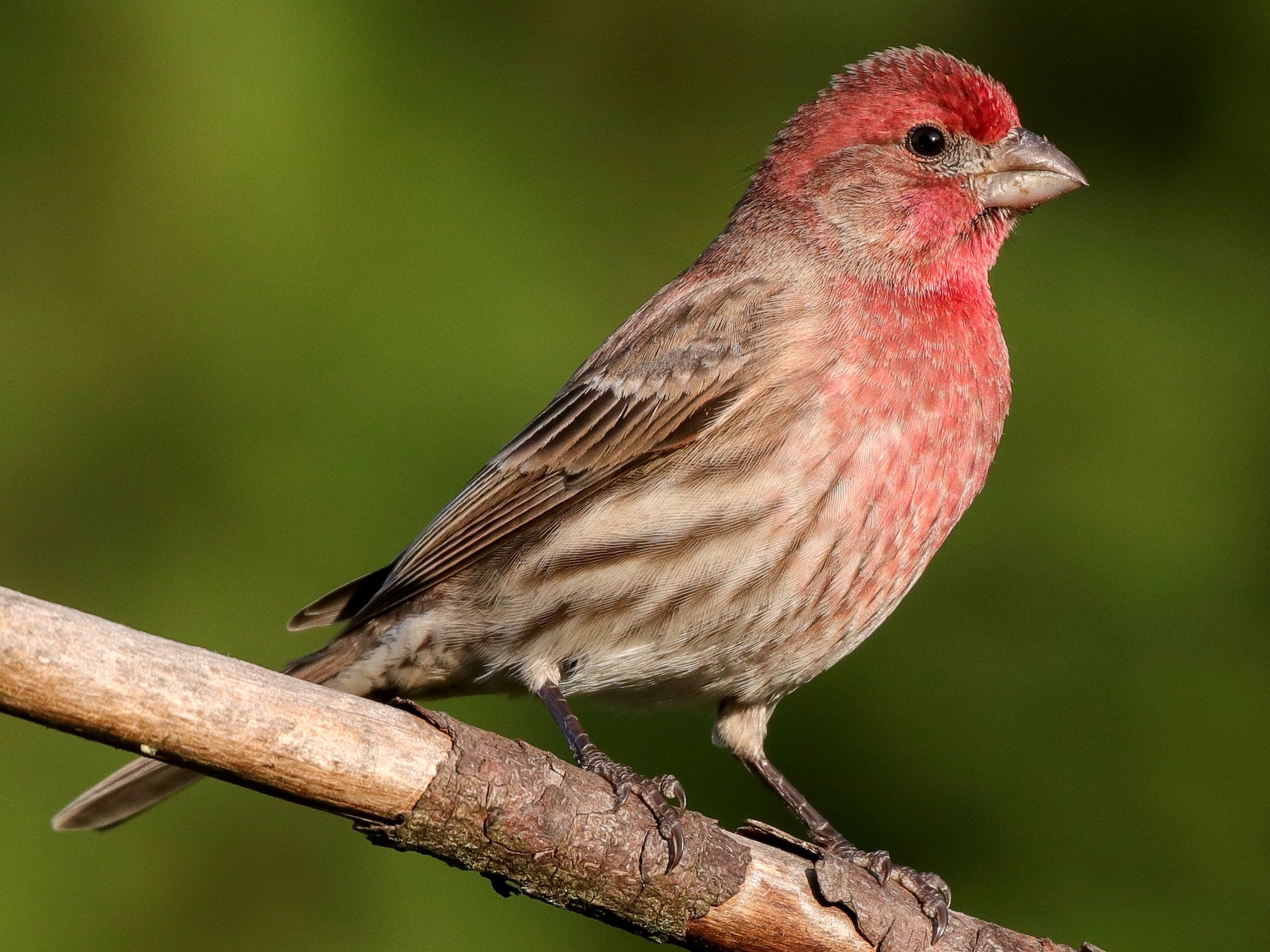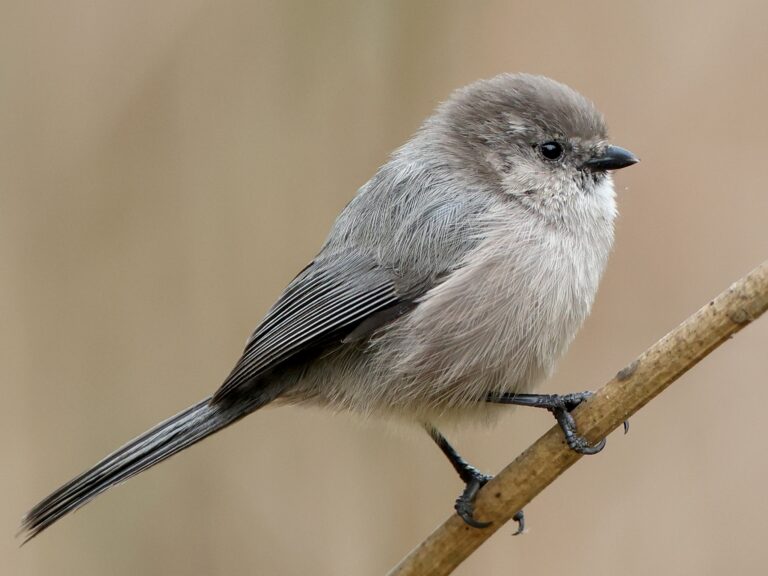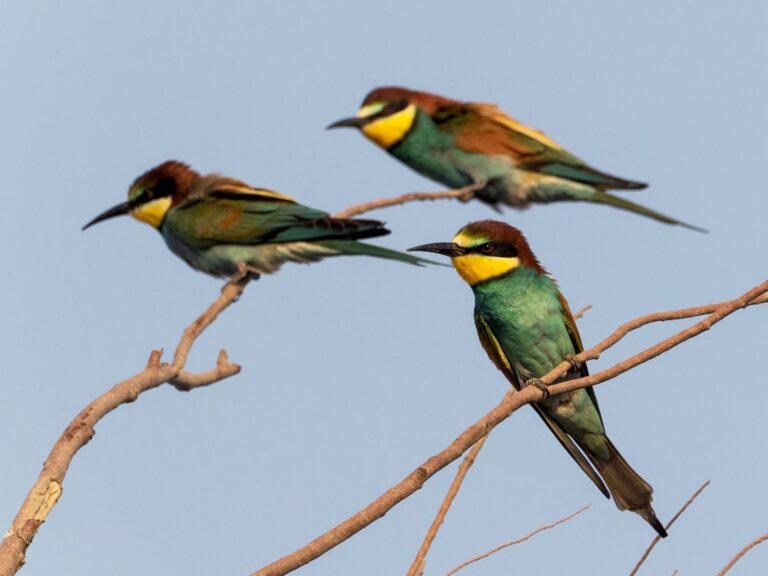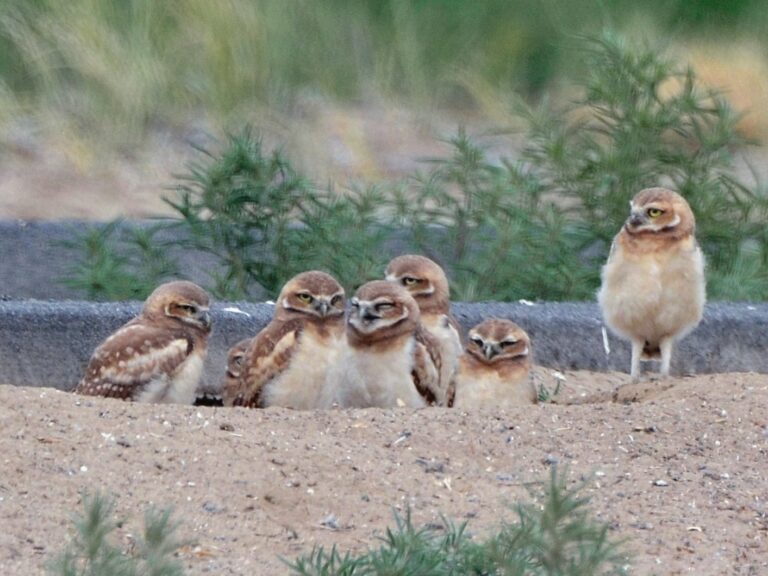House Finch: A Vibrant Songbird Transforming Urban Landscapes
The House Finch is a fascinating bird that has adapted well to urban environments. This small songbird can often be spotted in towns and cities across North America, showcasing its vibrant plumage and cheerful melodies.
Originally native to the western United States, the House Finch has expanded its range significantly. Its ability to thrive in various habitats, from deserts to busy streets, demonstrates its resilience.
Observing their behavior offers insight into their social interactions and nesting habits. This can be particularly intriguing for birdwatchers and nature enthusiasts alike.
As urban expansion continues, the House Finch serves as an example of wildlife adapting to changing environments. They add beauty to our surroundings and play a vital role in controlling insect populations.
Key Takeaways
- House Finches have bright plumage and are often found in urban areas.
- These birds are adaptable and can thrive in various habitats.
- Understanding their behavior contributes to better wildlife conservation.
Physical Characteristics and Identification
House finches exhibit distinct physical features that help identify them easily. Their appearance differs considerably between males and females, and their coloration is essential for identification.
Understanding how to distinguish house finches from similar species enhances birdwatching experiences.
Male and Female House Finch Identification
Male house finches (Carpodacus mexicanus) display bright red or orange plumage on their heads, throats, and chests. This vibrant coloration can vary based on diet.
Males also have streaked brown backs and wings. In contrast, female house finches lack bright colors and are mostly brown and heavily streaked, which aids in camouflaging.
Females also have a more subdued appearance, characterized by a streaked underbelly and mottled wings. This sexual dimorphism assists in easy identification in the wild.
Coloration and Plumage
The coloration of house finches varies among individuals, particularly in males. They often have bright red, orange, or yellow underparts, while their wings and backs remain brown with streaks.
This bright coloration is a result of carotenoid pigments from their diet. Female house finches are more uniformly brown, with lighter streaks. Their plumage allows them to blend into their surroundings. When observing these birds, note the color differences; males are striking, while females are more muted. The color and pattern play a significant role in survival and mating.
Distinguishing House Finch from Similar Species
They can be confused with other birds like the purple finch and house sparrow. Purple finches have a more extensive range of red coloration and a more robust bill. House sparrows are generally bulkier, with a stout shape and a distinctive black bib in males. To differentiate house finches, consider their smaller size and more slender build.
House finches have longer tails and more elongated bodies compared to the rounder house sparrows. Observing behaviors, such as song and feeding habits, can also provide clues to their identity.
Distribution and Habitat
The House Finch has a diverse range and thrives in various habitats. Understanding its geographic distribution and preferred environments is essential for appreciating its adaptability and behavior.
Geographic Range
This bird is widely distributed across North America. Its population spans from southern California and southern Arizona to Long Island. Originally, these birds were only found in the western United States and Mexico. However, they have expanded their range significantly since the 1940s.
Notably, House Finches have been spotted in urban areas and smaller cities. They have adapted well to human environments. Populations can now be found in places as far as Hawaii, often referred to as “Hollywood Finches” due to their prevalence in urban settings.
Preferred Habitats
They prefer open habitats that provide easy access to food and shelter. They are commonly found in residential areas, parks, and gardens. Their favorite spots include porches and branches where they can perch and survey their surroundings. These birds thrive in places with a mix of vegetation and structures.
They favor areas with seeds and fruits, which make up a significant portion of their diet. This adaptability allows them to live comfortably in both rural and urban environments. They are a common sight in many backyards.
Behavior and Ecology
The House Finch exhibits interesting feeding habits and vocalizations that play a significant role in its daily life. Understanding these aspects helps provide insight into its adaptability and social behaviors.
Feeding and Diet
House Finches primarily feed on seeds, which make up a large part of their diet. They enjoy a variety of seeds from plants like sunflowers, dandelions, and thistles.
These birds are also known to eat fruits and vegetables, often foraging in gardens and parks. They have a unique feeding technique, where they utilize their strong beaks to crack open hard seeds.
This adaptability allows them to thrive in urban environments, where food sources can vary. Common feeding tips for attracting House Finches include offering sunflower seeds or millet on backyard feeders.
Vocalizations and Song
House Finches are known for their melodious songs, which feature a series of cheerful chirps and whistles. Males typically sing to attract females and establish territory, displaying their health and vigor.
Their songs can vary greatly, and each male may have a unique tune. This vocal diversity helps maintain social structure within flocks.
Observers may also notice that House Finches produce chirps during social interactions, further enhancing group communication. Their vocalizations play an important role in both mating and social bonding.
You can hear them for yourself here.
Breeding and Nesting
The House Finch exhibits unique breeding and nesting behaviors that contribute to its adaptability in various environments. Understanding their nesting habits, materials, egg characteristics, and the development of their young provides insight into their reproductive success.
Nesting Habits and Locations
House Finches commonly build their nests in urban and suburban areas. They prefer sheltered spots such as eaves, windowsills, and trees.
These locations offer protection from predators and harsh weather. Nests are often placed close to human activity, taking advantage of trees, planters, or any structure that provides a secure space.
Their nesting sites can be found in a variety of habitats. This makes them one of the most successful birds in adapting to human environments.
Nest Building and Materials
When constructing their nests, House Finches use a variety of materials. They prefer items that provide strength and insulation, such as twigs, grass, feathers, and even scraps of plastic or string.
Typically, the female is responsible for building the nest, which can take a few days to complete. The nest is usually a cup shape, measuring about 10 centimeters in diameter. This structure helps protect the eggs and nestlings from the elements.
Eggs and Clutch Size
House Finches usually lay 2 to 6 eggs per clutch, although 4 eggs is common. The eggs are typically blue or greenish with speckled patterns. Each egg measures around 2 centimeters long and weighs about 2.5 grams. The female may produce several clutches in a single breeding season.
Incubation Period and Development
The incubation period for House Finch eggs lasts approximately 12 to 14 days. The female incubates the eggs alone, while the male provides food and protection. Once hatched, the chicks are blind and covered in down. They grow rapidly and are fed a diet that consists mainly of seeds and insects.
After about 19 to 26 days, the nestlings fledge and leave the nest. Fledglings remain dependent on their parents for food and care for a short time before becoming fully independent.
Conservation and Population Status
The conservation status of the House Finch is influenced by its population trends and the threats it faces. Understanding these aspects is crucial for effective conservation efforts.
Population Trends
House Finch populations have shown a mixed trajectory. Historically, this species expanded remarkably in the eastern United States after being introduced in the 1940s.
Current estimates suggest that their populations are stable in many areas, although local fluctuations can occur due to various environmental factors. Recent studies indicate that urban environments often support healthy House Finch populations.
The adaptability of this bird to suburban and urban settings allows for a consistent presence. For ongoing monitoring, organizations utilize the Migratory Bird Treaty Act to protect their habitat.
Threats and Protections
Despite their adaptability, House Finches face threats that can impact their numbers. Habitat destruction from urban development and agricultural practices poses significant risks. Disease outbreaks, such as Mycoplasma gallisepticum, can significantly reduce their population in affected areas. Protective measures include habitat preservation and public awareness programs.
Conservationists advocate for protecting nesting areas and maintaining food sources within urban settings. Educating the community about the importance of these birds can foster supportive environments. Organizations often highlight the need for ongoing monitoring to ensure that populations remain healthy and stable.
Frequently Asked Questions
The House Finch is a common bird with some distinct characteristics and behaviors. Many aspects of its appearance, calls, habitat, diet, and nesting habits are often explored by those interested in these lively birds.
What distinguishes the male from the female House Finch in appearance?
Males typically have brighter plumage than females. They usually feature a red or orange coloration on their heads, throats, and chests. In contrast, females are more muted, with streaky brown and tan feathers.
How can one differentiate between a House Finch and a Red-headed Sparrow?
The House Finch has a more slender body and a shorter, thicker bill compared to the Red-headed Sparrow. Additionally, the Red-headed Sparrow sports a solid red head, while the House Finch displays a mix of colors, especially in males.
What variety of sounds or calls is typical for a House Finch?
House Finches are known for their cheerful and varied songs. Their calls often sound like a series of chirps or tweets, and they can sometimes mimic other birds’ sounds. This diversity in vocalization is a notable aspect of their communication.
What type of habitat is preferred by House Finches?
House Finches thrive in urban and suburban areas. They are often found in parks, gardens, and near human habitations, where they can easily find food and nesting sites.
What does the diet of a House Finch generally consist of?
The diet of a House Finch mainly includes seeds and fruits. They are particularly fond of sunflower seeds, millet, and berries. They will also consume insects, especially during the breeding season.
How do House Finches construct their nests and where are they typically located?
House Finches build their nests using various materials, including twigs, grass, and scraps of string or paper. They often place their nests on ledges, in shrubs, or inside building eaves to keep them safe from predators.
